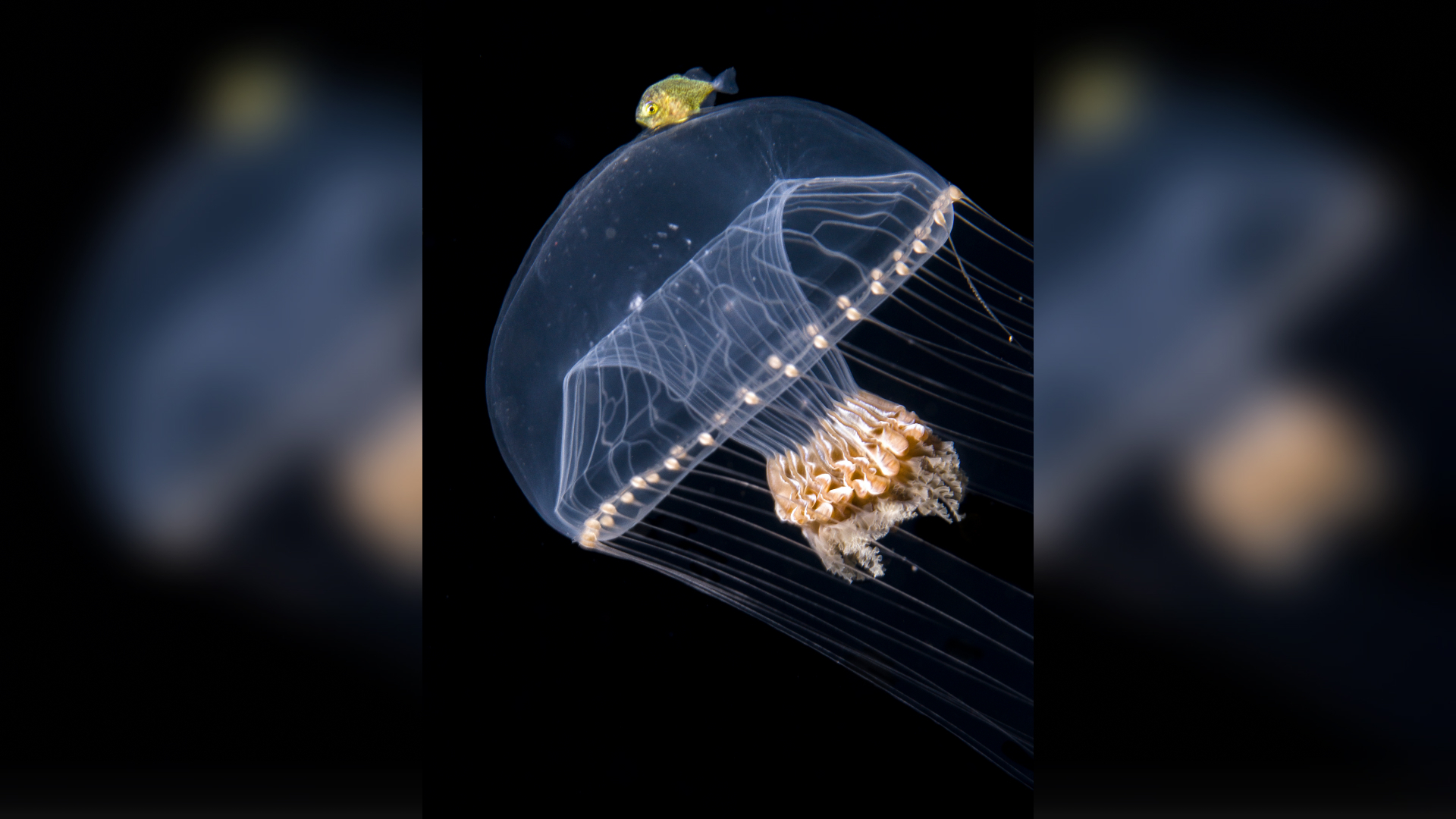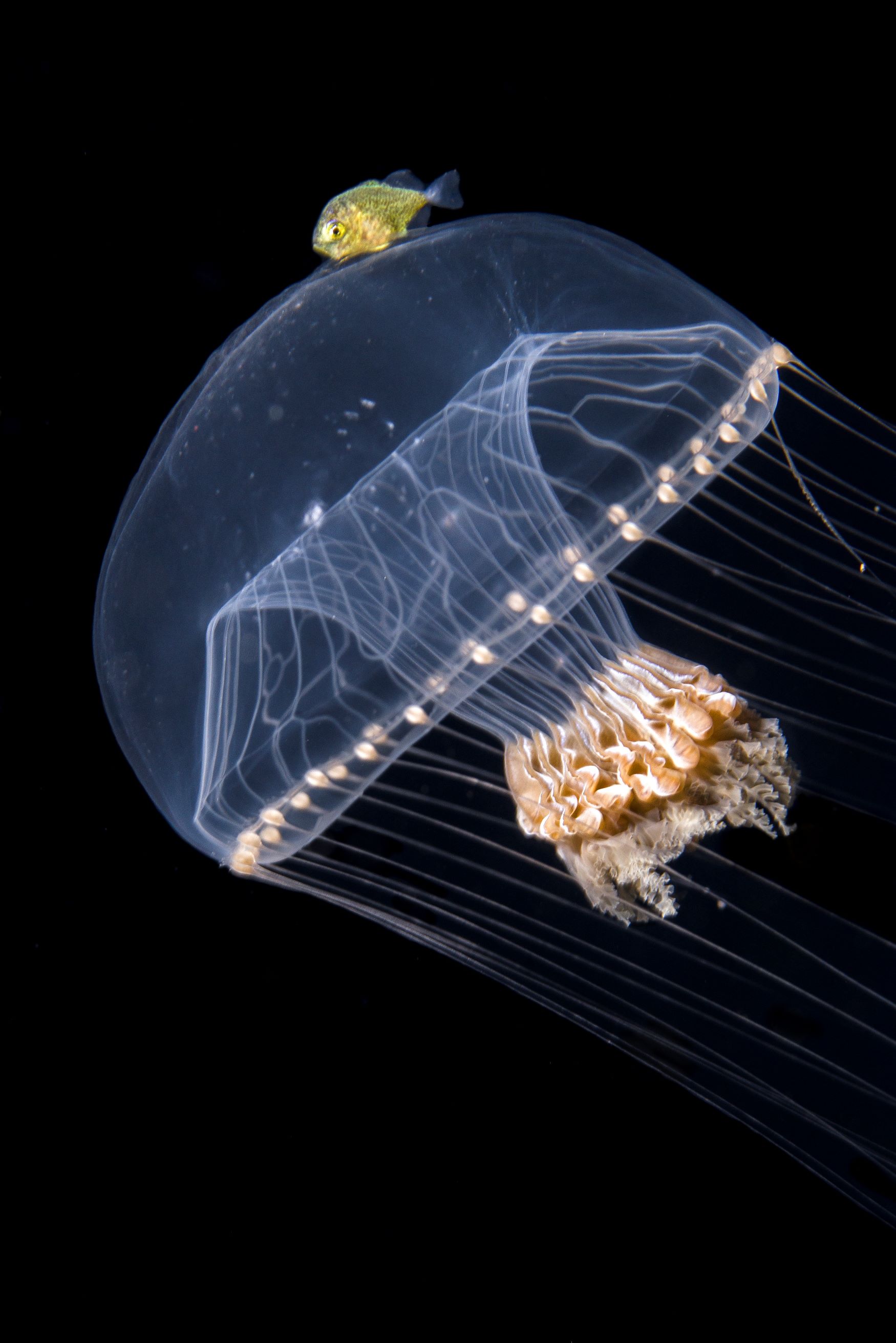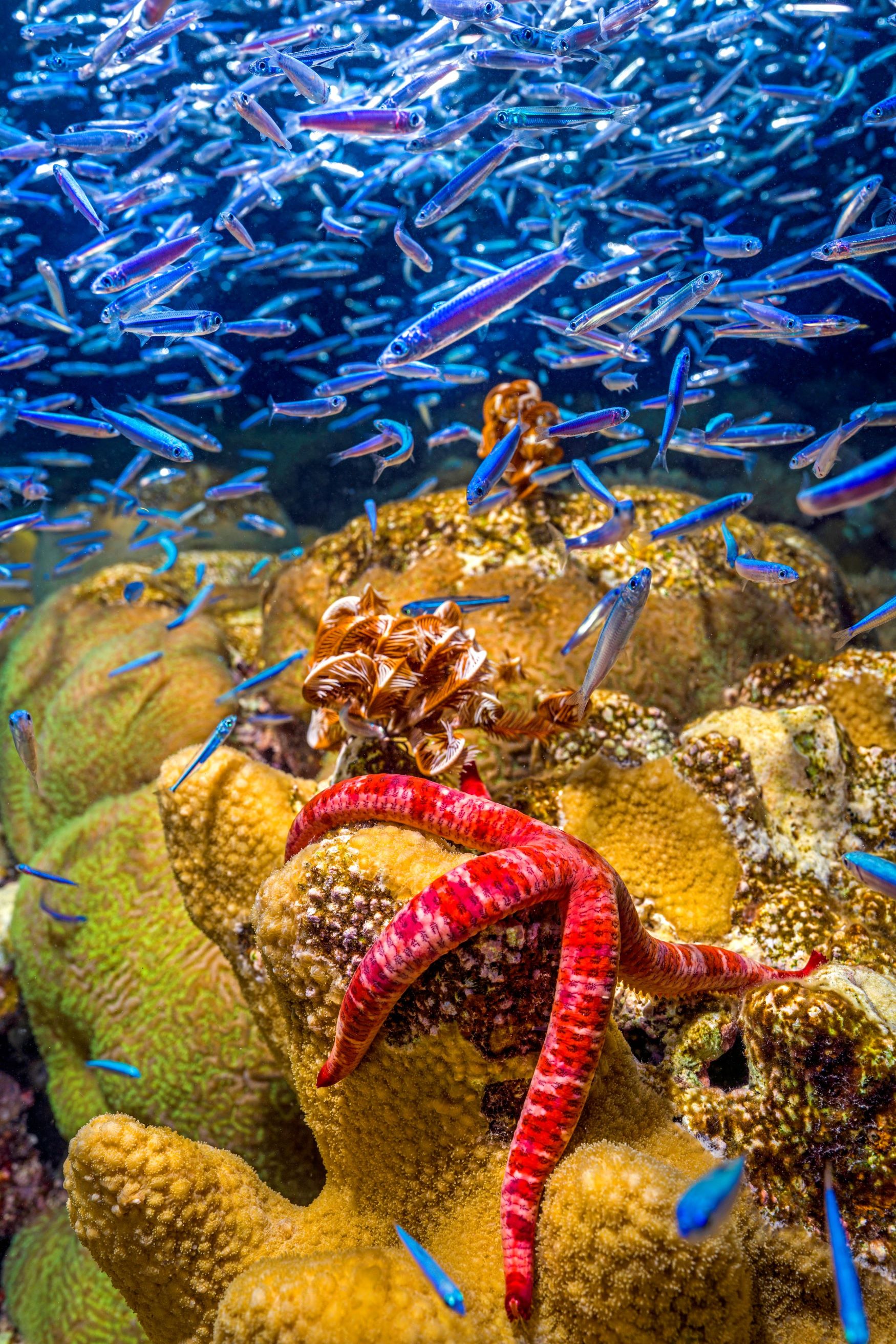
A jellyfish "elevator" carrying a hitchhiking fish up from the ocean depths has been captured in a photo documenting one of the largest migrations in the world — one that takes place every night.
Tom Shlesinger, a marine ecologist at Tel Aviv University, took the photo, titled "Nightly Elevator," off the coast of Florida's Palm Beach. It won the Behavior category at this year's Royal Society Publishing Photography Competition.

Shlesinger's photo captures the vertical journey of billions of marine creatures that live in the twilight zone — between 660 and 3,280 feet (200 to 1,000 meters) beneath the ocean surface — as they travel up to the surface. In the photo, an unidentified jellyfish species carries a hitchhiking yellow fish as it ascends from the depths.
According to a statement from the Royal Society, many small or young animals hitch a ride up to the surface on jellyfishes, providing them with a "unique elevator."
"Not only that these juveniles can peacefully rest while the jellyfish transports them above, but they also get some protection," representatives wrote. "With their stinging cells, the jellies protect their hitchhikers from predators that will avoid getting too close."
Researchers think the nightly migration — known as the diel vertical migration (DVM) — is related to feeding behaviors, enabling smaller creatures to feed in the food-rich surface waters under the cover of darkness, which helps protect them from predators. Before dawn, they descend back to the safety of the twilight zone.
Related: Alien-like comb jellies have a nervous system like nothing ever seen before
The overall winner of the photography competition was Irina Petrova Adamatzky, whose image "Martian landscape" depicted the slime mold Lamproderma scintillans growing on a fallen leaf in the U.K.
Other category winners included an image of a starfish on a coral reef, also taken by Shlesinger, and "A crack in time," by Chia-Hsin Tsai, which shows a fault in an outcrop in the Corinth Canal in Greece that was exposed during excavation work in 2022.









